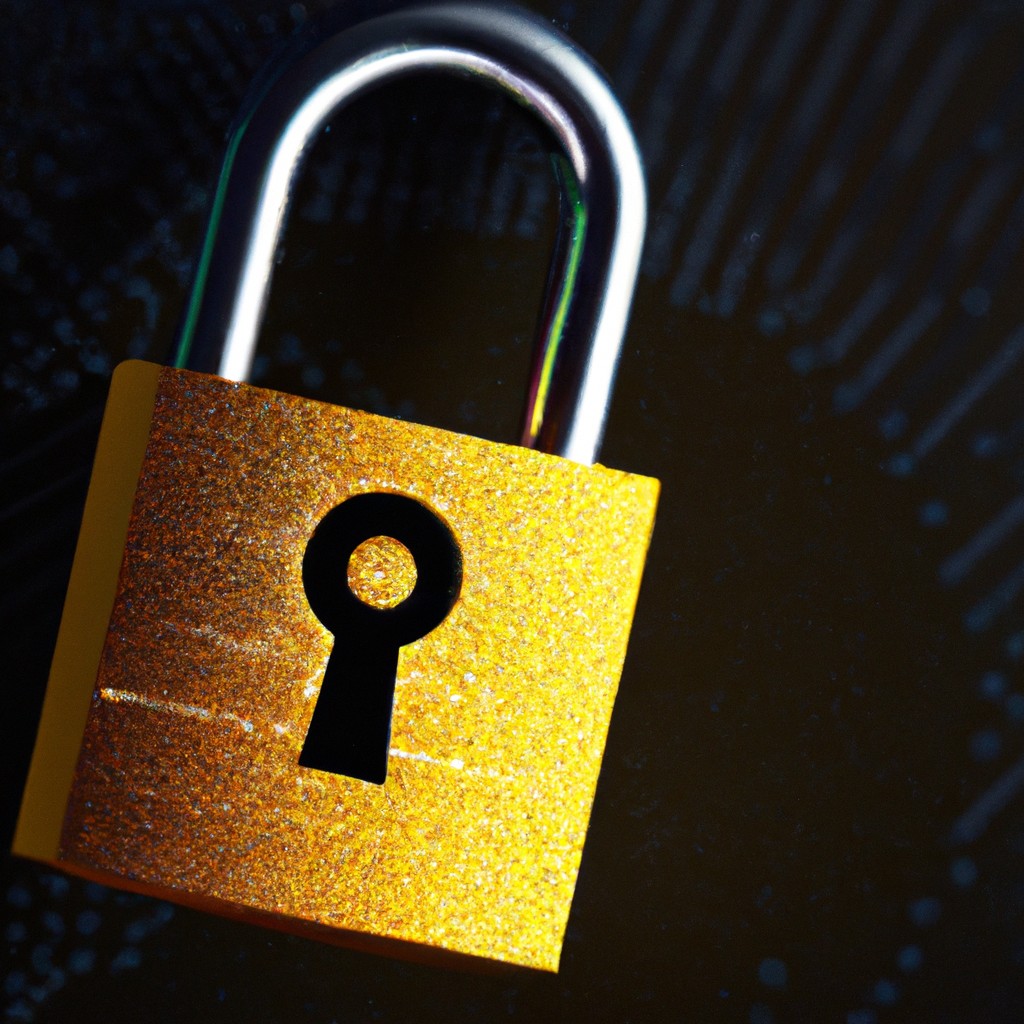In this article, you will discover the essential do’s and don’ts of secure browsing. Whether you are browsing from home, the office, or online for personal reasons, ensuring your safety and privacy is key. By following these guidelines, you can navigate the digital landscape with confidence and protect yourself from potential threats. So let’s dive in and explore the best practices for secure browsing.
Do’s of Secure Browsing
Use a secure web browser
One of the first steps in ensuring secure browsing is to use a secure web browser. Look for browsers that prioritize security and offer advanced features to protect your online activities. Popular choices include Google Chrome, Mozilla Firefox, and Microsoft Edge. These browsers frequently release updates with enhanced security measures, making them a reliable choice for protecting your online privacy.
Keep your browser up to date
Regularly updating your web browser is crucial for maintaining optimal security. Browser updates often include important security patches and bug fixes that address vulnerabilities. Ensure that you regularly check for updates and install them promptly. Some browsers even offer automatic update features, which can make the process easier and more convenient.
Enable private browsing mode
When engaging in sensitive activities, it is best to enable private browsing mode. This feature, available in most modern web browsers, helps protect your privacy by not saving your browsing history, cookies, or passwords. Private browsing is particularly useful when using a public or shared computer, as it prevents others from accessing your personal information.
Use strong and unique passwords
Creating strong and unique passwords is essential for maintaining secure browsing habits. Use a combination of uppercase and lowercase letters, numbers, and symbols to create complex passwords. Avoid using easily guessable information like birthdays or names. Additionally, it’s important to use a different password for each online account to prevent unauthorized access. Consider using a reliable password manager to securely store and generate unique passwords for convenience and heightened security.
Regularly update your operating system
Keeping your operating system up to date is crucial for maintaining a secure browsing experience. Operating system updates often include security patches that address vulnerabilities and protect against potential threats. Regularly check for updates on your device and install them promptly. Enabling automatic updates, if available, ensures you receive the latest security updates without manual intervention.
Use reliable antivirus software
Installing reputable antivirus or anti-malware software is another essential step in securing your browsing activities. These software programs help identify and eliminate viruses, malware, and other potential threats. Make sure to choose a reliable antivirus software and keep it up to date. Regularly scanning your system for viruses and malware can help detect any potential security risks and take appropriate action.
Be cautious while clicking on links
Exercise caution when clicking on links, as they can be a potential gateway to malicious websites or phishing attempts. Before clicking on a link, hover over it to view its destination URL. Avoid clicking on links that appear suspicious or unknown, especially if they come from untrusted sources. Be aware of phishing attempts, which often come through email or social engineering techniques. Consider using link scanners or website reputation services to further protect against potential threats.
Verify website security
Before entering personal information or conducting sensitive activities on a website, ensure its security. Look for secure website indicators such as “https://” and a padlock icon in the address bar. These indicate that the website has a valid SSL certificate and is using encryption to protect data transmission. Avoid entering personal information on unencrypted websites, as it can be easily intercepted by attackers.
Use a virtual private network (VPN)
Consider using a virtual private network (VPN) to secure your browsing activities. A VPN encrypts your internet connection, protecting your data from prying eyes and potential hackers. It also allows you to browse the internet anonymously by masking your IP address. When using a VPN, your online activities are routed through a secure server, ensuring privacy and security.
Educate yourself about phishing attacks
Phishing attacks are a common method used by cybercriminals to trick individuals into revealing sensitive information. Educate yourself about common phishing techniques and how to identify them. Be cautious of emails that ask for personal information or contain suspicious links. Avoid clicking on any attachments or links from unknown or untrusted sources. By staying informed and vigilant, you can minimize the risk of falling victim to phishing attacks.
Don’ts of Secure Browsing
Don’t use public Wi-Fi for sensitive activities
Public Wi-Fi networks are often unsecured, making them a potential hotspot for attackers. Avoid conducting sensitive activities such as online banking or making purchases on public Wi-Fi networks. If you must use public Wi-Fi, consider using a VPN to encrypt your connection and protect your data from unauthorized access.
Don’t download files from untrusted sources
Downloading files from untrusted sources can expose your device to malware or other security threats. Only download files from reputable sources or websites that you trust. Be cautious of file-sharing websites or unknown sources, as they may distribute malicious files that can compromise your system’s security.
Don’t ignore browser security warnings
Web browsers often display security warnings when visiting potentially dangerous websites. These warnings are designed to protect you from potential threats. Never ignore these warnings, as they may indicate that the website is compromised or attempting to harm your system. Avoid visiting such websites or interacting with any suspicious content.
Don’t enter personal information on unencrypted websites
Unencrypted websites lack the necessary security measures to protect your personal information. Avoid entering sensitive data, such as credit card numbers or passwords, on websites that do not have an “https://” prefix or a padlock icon. This ensures that your information is transmitted securely and reduces the risk of it being intercepted by attackers.
Don’t click on suspicious pop-up ads
Suspicious pop-up ads can be a source of malware or phishing attempts. Avoid clicking on pop-up ads that appear suspicious or claim unrealistic offers. Closing the pop-up window through the designated “X” button is usually the safest way to handle them. Additionally, consider enabling pop-up blockers in your browser settings to minimize their occurrence.
Don’t save passwords in your browser
Although it may be convenient, saving passwords in your browser can pose a security risk. If someone gains access to your device, they may be able to access all of your saved passwords. Instead, manually enter your passwords each time or use a reliable password manager to securely store and autofill your credentials.
Don’t install untrusted browser extensions
Browser extensions can enhance your browsing experience but be cautious when installing them. Some extensions may be designed with malicious intent, compromising your security. Only install extensions from trusted sources or reputable developers. Regularly review the permissions of installed extensions and remove any that may have unnecessary access to your data or browsing history.
Don’t fall for social engineering tactics
Social engineering tactics aim to manipulate individuals into revealing sensitive information or performing actions that can compromise security. Be skeptical of emails or messages that request personal information or urgent actions. Verify the legitimacy of such requests through independent means before taking any action. By maintaining a healthy level of skepticism, you can protect yourself from potential social engineering attacks.
Don’t share sensitive information over email or chat
Sensitive information, such as passwords or financial details, should never be shared over email or chat platforms. These communication channels may not be secure, and there is a risk of interception by attackers. Instead, use secure communication methods or encrypted messaging services when sharing sensitive information.
Don’t use weak or easily guessable passwords
Using weak or easily guessable passwords puts your online accounts at risk. Avoid common passwords like “123456” or “password.” Instead, choose passwords that are at least eight characters long and include a mix of uppercase and lowercase letters, numbers, and symbols. Creating a passphrase, which is a longer sequence of words, can provide added security and makes it easier to remember complex passwords.

Use a Secure Web Browser
Choose a browser with advanced security features
When selecting a web browser, opt for one that prioritizes security and offers advanced features to protect your online activities. Look for options that have built-in protection against malware, phishing attempts, and other security threats. Research different browser options and choose one that aligns with your security needs.
Look for a browser that blocks malicious websites
A secure web browser should have the capability to block malicious websites. These browsers often have built-in features or extensions that detect and block access to websites known for hosting malware or participating in phishing attacks. This additional layer of protection ensures that you are safeguarded from visiting dangerous websites.
Ensure the browser has regular security updates
Regular security updates are crucial for a secure web browsing experience. Ensure that the browser you choose has a track record of releasing regular updates to address security vulnerabilities and enhance user security. This commitment to ongoing security updates demonstrates the browser’s dedication to protecting its users against emerging threats.
Consider using browsers that offer built-in privacy features
If privacy is a top concern, consider using web browsers that offer built-in privacy features. These browsers often include features such as tracker blockers, privacy-enhanced search engines, and options to disable third-party cookies. By using browsers with these privacy-focused features, you can further protect your online activities and minimize data tracking by advertisers and other entities.
Keep Your Browser Up to Date
Regularly check for browser updates
To ensure the security of your browsing experience, make it a habit to regularly check for browser updates. Browser updates often include important security patches and bug fixes, addressing vulnerabilities that could be exploited by malicious actors. By checking for updates at least once a month, you can stay on top of the latest security enhancements.
Enable automatic updates if available
Many browsers offer automatic update features, taking the hassle out of manually checking for updates. If the option is available, enable automatic updates. With this setting enabled, your browser will automatically download and install updates in the background, ensuring you have the latest security features without any effort on your part.
Updates often include security patches and bug fixes
Browser updates are not just about adding new features or improving performance; they are also essential for maintaining security. Updates frequently include security patches and bug fixes that address vulnerabilities discovered by the browser’s developers or reported by users. By keeping your browser up to date, you can ensure that you are protected against the latest security threats.

Enable Private Browsing Mode
Activate private browsing for sensitive activities
Private browsing mode, also known as incognito mode or private mode, is a useful tool for protecting your privacy during sensitive activities. When enabled, private browsing mode does not save your browsing history, cookies, or passwords. This means that once you close the private browsing window, there is no trace of your online activities on the device. Activate private browsing mode when conducting sensitive tasks like online banking or shopping to avoid leaving behind any digital footprint.
Private mode doesn’t save browsing history, cookies, or passwords
One of the primary benefits of private browsing mode is that it doesn’t save your browsing history, cookies, or passwords. This ensures that information such as websites visited, login credentials, or preferences are not stored on your device. By not leaving behind any traces of your online activities, you can maintain a higher level of privacy and reduce the likelihood of unauthorized access to your sensitive information.
Useful when using a public or shared computer
Private browsing mode is particularly useful when using a public or shared computer. Since private mode does not store any browsing data, it minimizes the risk of anyone accessing your online accounts, personal information, or browsing history after you’ve finished using the device. Activating private mode on a public or shared computer helps protect your privacy and maintain the security of your online activities.
Use Strong and Unique Passwords
Create passwords with a mix of characters, numbers, and symbols
A fundamental aspect of secure browsing is using strong and unique passwords. When creating passwords, include a mix of uppercase and lowercase letters, numbers, and symbols. The more complex your password, the more difficult it is for attackers to guess or crack it. Aim for passwords that are at least eight characters long and avoid using easily guessable information like birthdays or names.
Avoid using easily guessable information like birthdays or names
Using personal information such as birthdays, names, or common phrases as passwords can make it easier for attackers to guess or crack them. Avoid using easily guessable information in your passwords to enhance their strength and make them more resilient against brute-force attacks. Creating passwords that are unique and unrelated to your personal life reduces the risk of unauthorized access to your online accounts.
Use a different password for each online account
Using the same password for multiple online accounts is a significant security risk. If one account is compromised, all your other accounts with the same password become vulnerable as well. To improve your security posture, use a different password for each online account. This way, even if one account is compromised, the others remain secure.
Consider using a reliable password manager for convenience and security
Keeping track of multiple strong and unique passwords can be challenging. Consider using a reliable password manager to securely store and manage your passwords. Password managers generate strong, randomized passwords for each of your online accounts and store them in an encrypted vault. With a password manager, you only need to remember one master password, simplifying the process of maintaining strong and unique passwords across all your accounts.

Regularly Update Your Operating System
Frequently check for updates on your device
To maintain a secure browsing experience, it is essential to regularly check for updates on your operating system. Operating system updates often include crucial security patches that address vulnerabilities and protect against potential threats. Keep in mind that updates can also include bug fixes and new features that enhance performance and usability.
Install updates promptly to patch security vulnerabilities
As soon as updates become available for your operating system, it is important to install them promptly. Security vulnerabilities can be exploited by attackers, potentially compromising your device and online activities. Timely installation of updates ensures that you have the latest security patches, helping to keep your operating system secure.
Enable automatic updates if available
Most operating systems offer automatic update options, which can simplify the process of staying up to date. By enabling automatic updates, your device will download and install updates in the background without requiring manual intervention. This ensures that your operating system remains protected with minimal effort on your part.
Use Reliable Antivirus Software
Install reputable antivirus or anti-malware software
Using reputable antivirus or anti-malware software adds an extra layer of protection to your browsing activities. Look for well-known and reputable software options that have a proven track record of effectively detecting and eliminating viruses, malware, and other potential threats. Research different software options and choose one that suits your specific security needs.
Keep the software up to date
To ensure optimal protection, it is crucial to keep your antivirus software up to date. Software updates often include new virus definitions, ensuring that the software can detect the latest threats. Regularly check for updates and install them promptly to maintain the effectiveness of your antivirus software.
Regularly scan your system for viruses and other threats
Regularly scanning your system for viruses and other threats is an important security practice. Schedule regular scans of your device to identify and eliminate any potential security risks. Full system scans, targeted scans, and real-time scanning can help identify and resolve any issues, ensuring the security and integrity of your system.

Be Cautious While Clicking on Links
Hover over links to view their destination before clicking
Before clicking on a link, hover your cursor over it to view the URL destination. This allows you to verify whether the link is taking you to a legitimate website or a potentially malicious one. Be wary of links that appear suspicious, have misspellings, or take you to unexpected destinations. Hovering over links helps you stay vigilant and avoids falling into the trap of clicking on malicious links.
Avoid clicking on suspicious or unknown links
To maintain secure browsing habits, it is important to avoid clicking on suspicious or unknown links. Links received via email, social media, or from untrusted sources should be treated with caution. When in doubt, refrain from clicking. Malicious links can lead to phishing scams, malware downloads, or other forms of cyberattacks.
Beware of phishing attempts through email or social engineering
Phishing attempts through email or social engineering tactics are common methods used by attackers to deceive individuals into revealing sensitive information. Be cautious of emails that ask for personal information, especially if they come from unknown sources or have suspicious content. Avoid clicking on links within emails or messages unless you are certain of their authenticity.
Consider using a link scanner or website reputation service
To further protect yourself when browsing the internet, consider using a link scanner or website reputation service. These tools can help identify potentially dangerous websites or links before you click on them. Link scanners check links for known malicious content, while website reputation services provide insights into the safety and trustworthiness of a website. Integrating these tools into your browsing routine can help prevent accidental visits to malicious websites.
Don’t Use Weak or Easily Guessable Passwords
Avoid common passwords like ‘123456’ or ‘password’
Using common passwords like “123456” or “password” makes it incredibly easy for attackers to gain unauthorized access to your online accounts. Avoid using these common and easily guessable passwords to maintain secure browsing habits. Instead, opt for unique and complex passwords that are difficult to guess or crack.
Don’t use personal information that can be easily guessed
Avoid using personal information that can be easily guessed as part of your password. Information such as your name, birthday, or the names of your loved ones can be easily obtained or deduced by attackers. Using such information as part of your password increases the risk of unauthorized access to your accounts.
Choose passwords with minimum length and complexity requirements
When creating passwords, aim for minimum length and complexity requirements. Longer passwords are generally more secure, so choose a password with at least eight characters. Include a mix of uppercase and lowercase letters, numbers, and symbols to enhance complexity. The harder your password is to guess, the better protected your accounts will be.
Consider using a passphrase for added security
Consider using a passphrase instead of a traditional password for added security. A passphrase consists of multiple words strung together, creating a longer and more complex password. Using a passphrase that is unique and unrelated to your personal life can significantly improve the security of your online accounts. Passphrases are often easier to remember than traditional passwords while providing increased protection against brute-force attacks.
By following these do’s and don’ts of secure browsing, you can significantly enhance your online security and protect your sensitive information from potential threats. Remember to stay vigilant, continuously educate yourself about evolving cybersecurity practices, and implement necessary measures to ensure a safe and secure browsing experience.
© 2016-2023 by LiVentures. All rights reserved. No part of this document may be reproduced or transmitted in any form or by any means, electronic, mechanical, photocopying, recording, or otherwise, without prior written permission of LiVentures.







